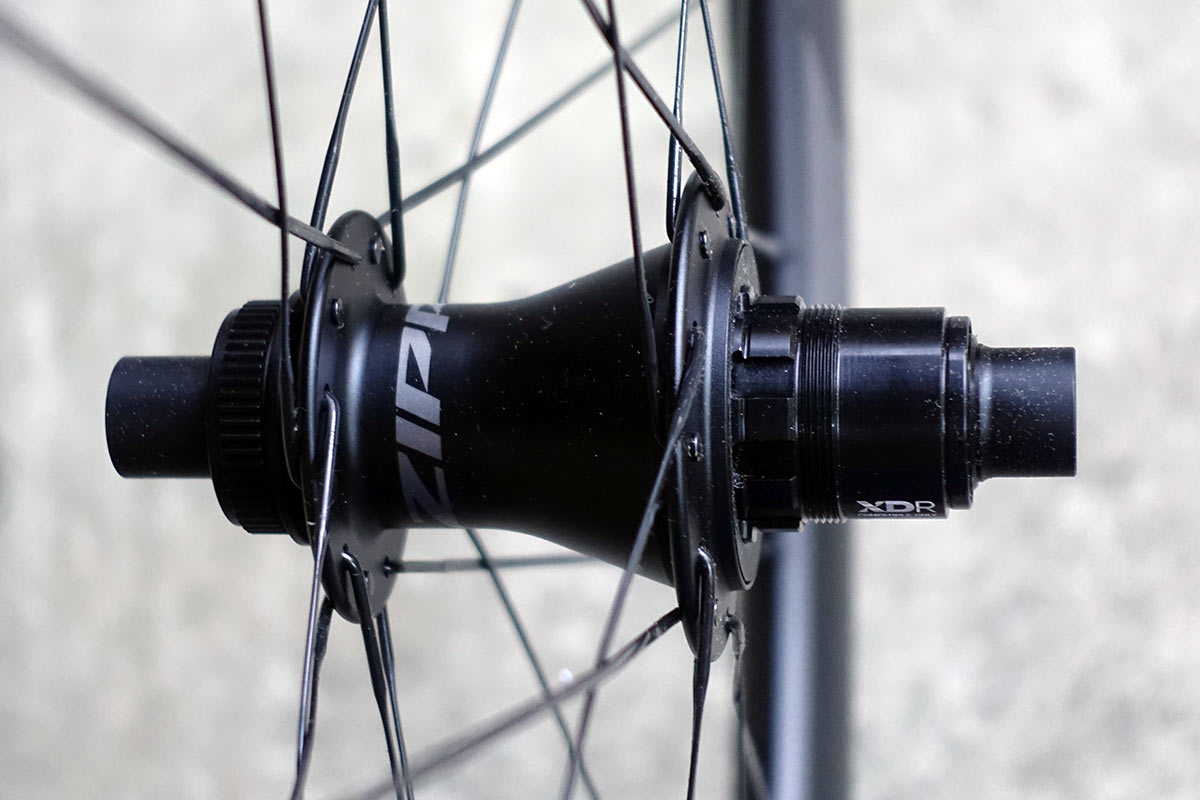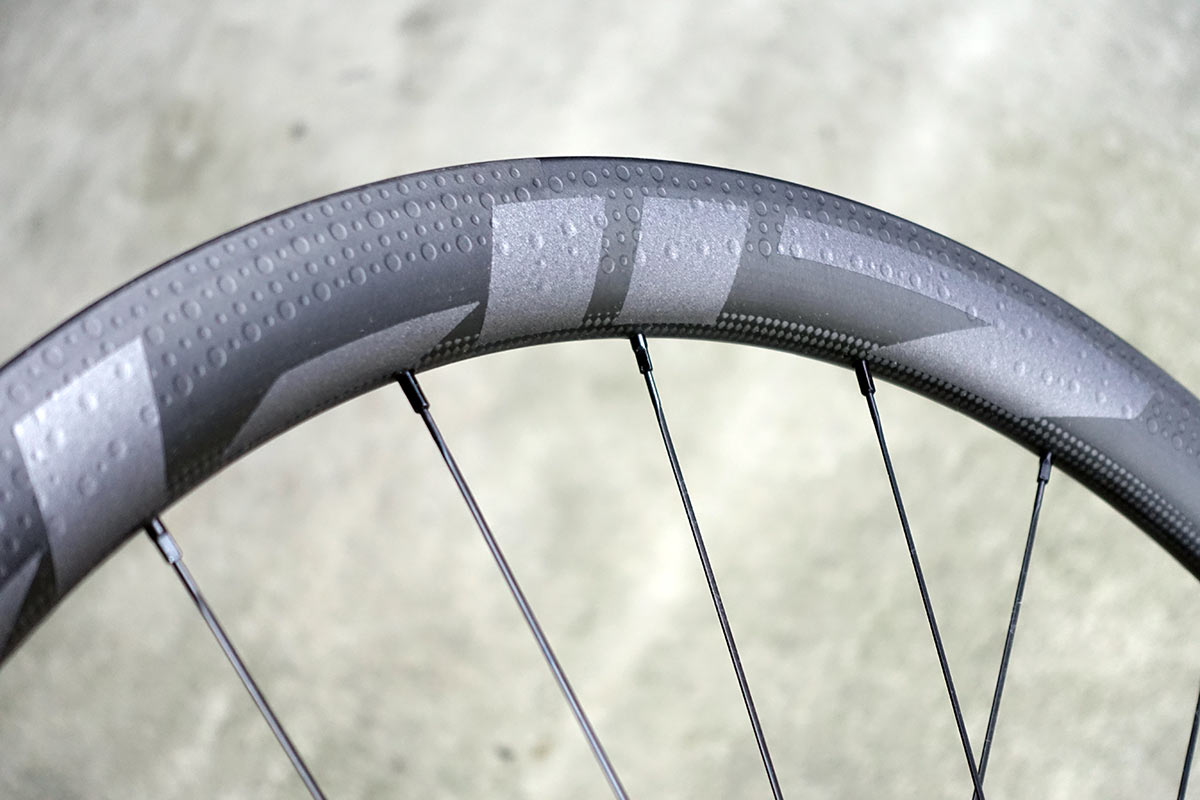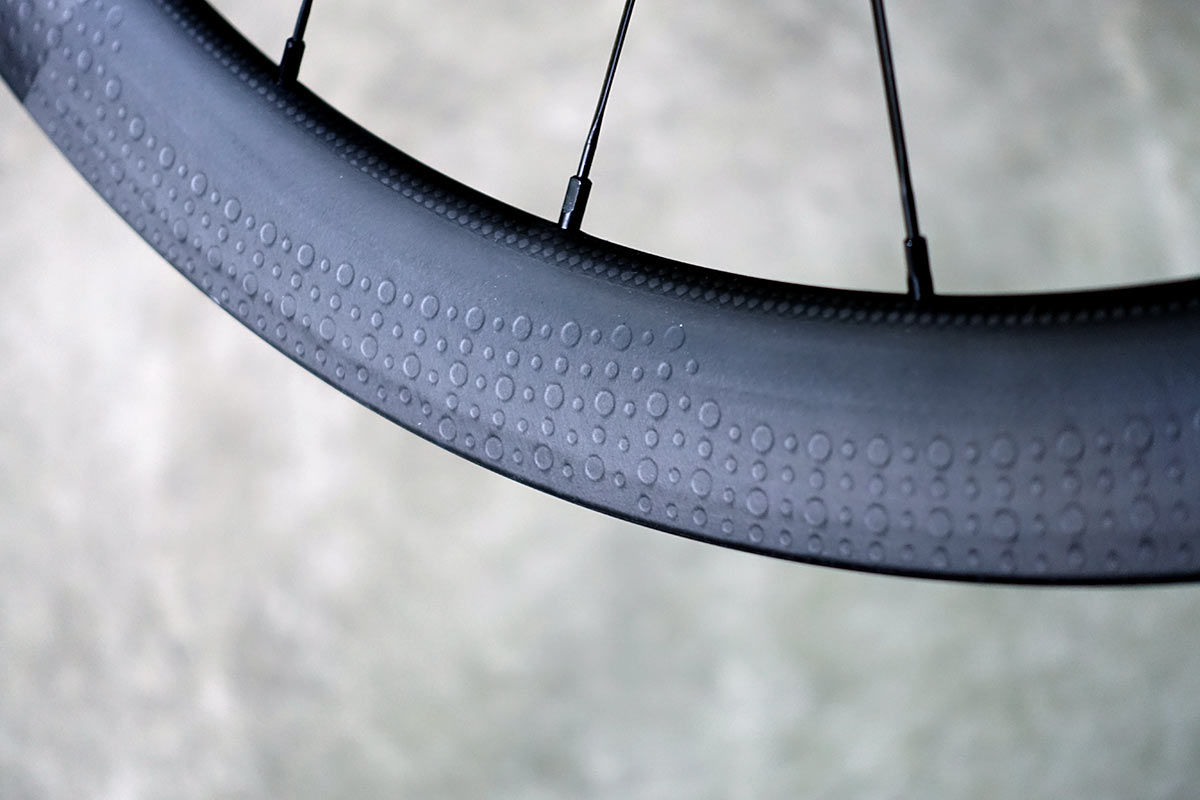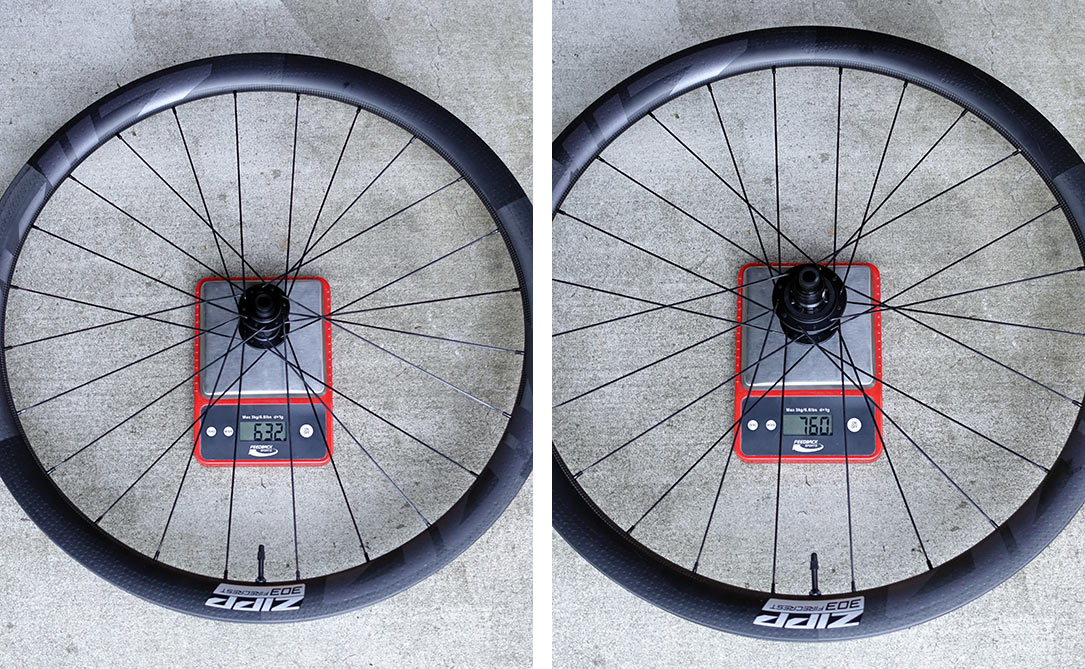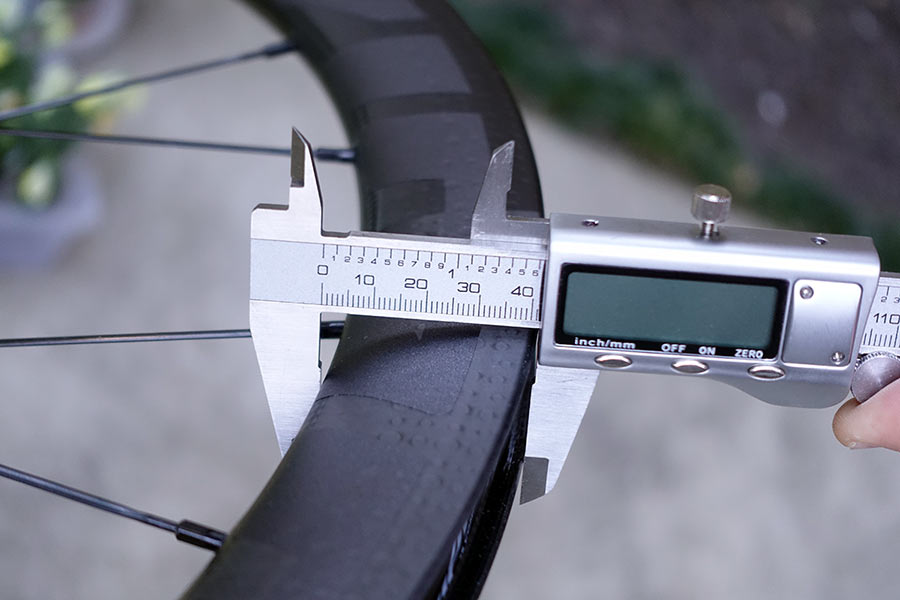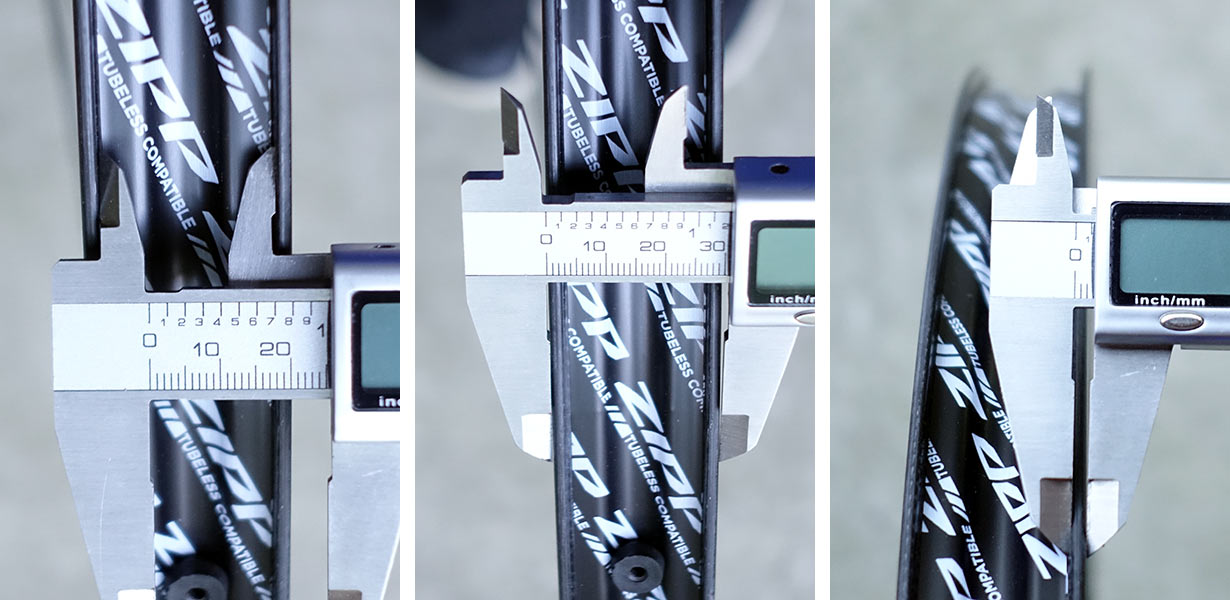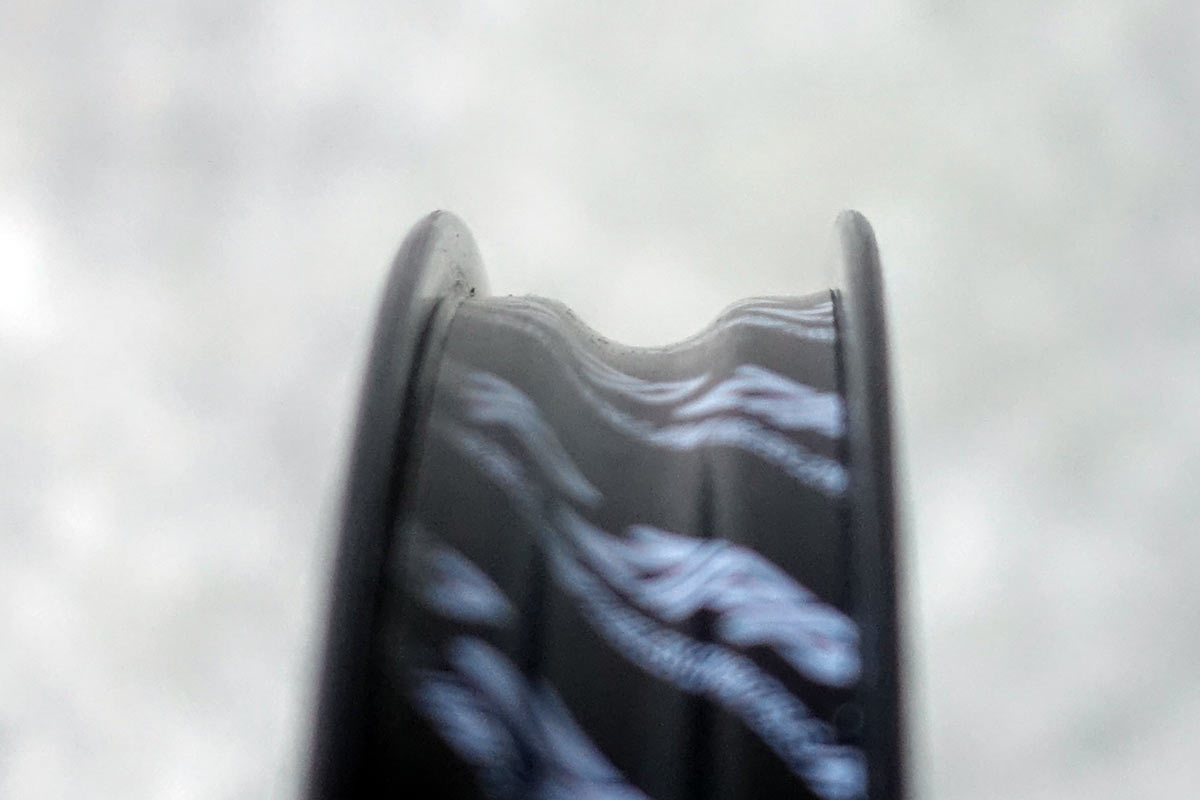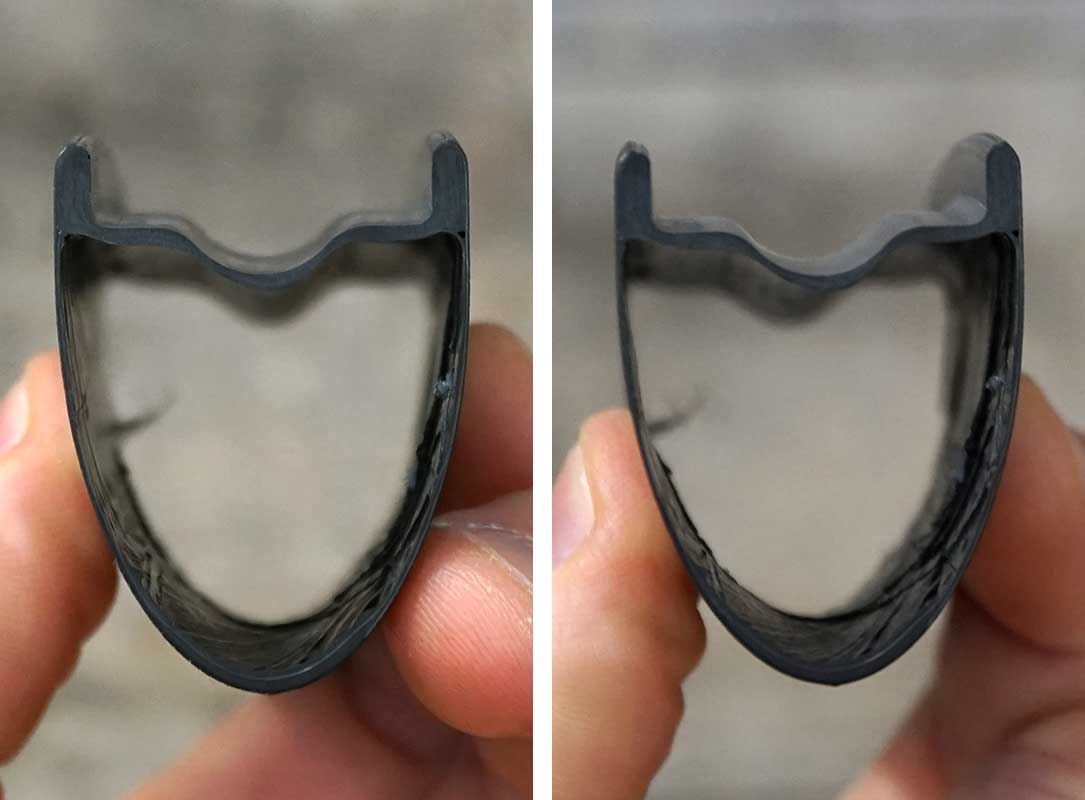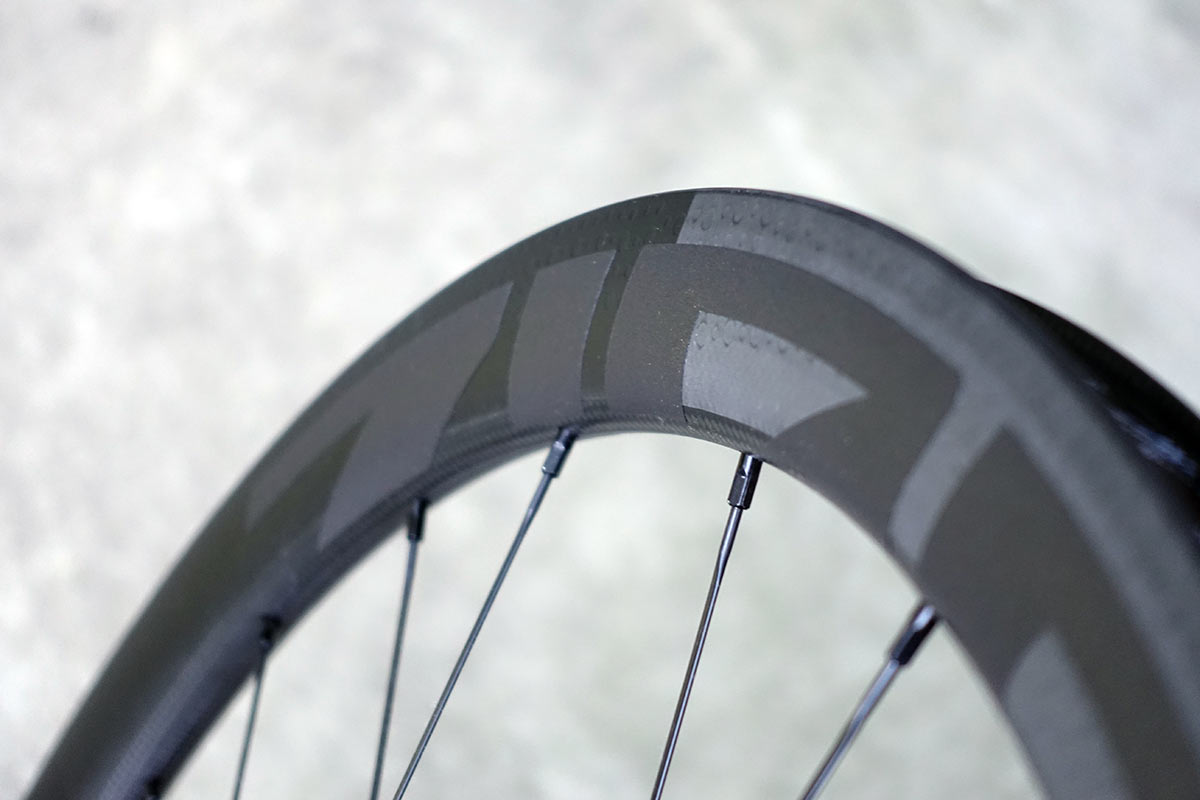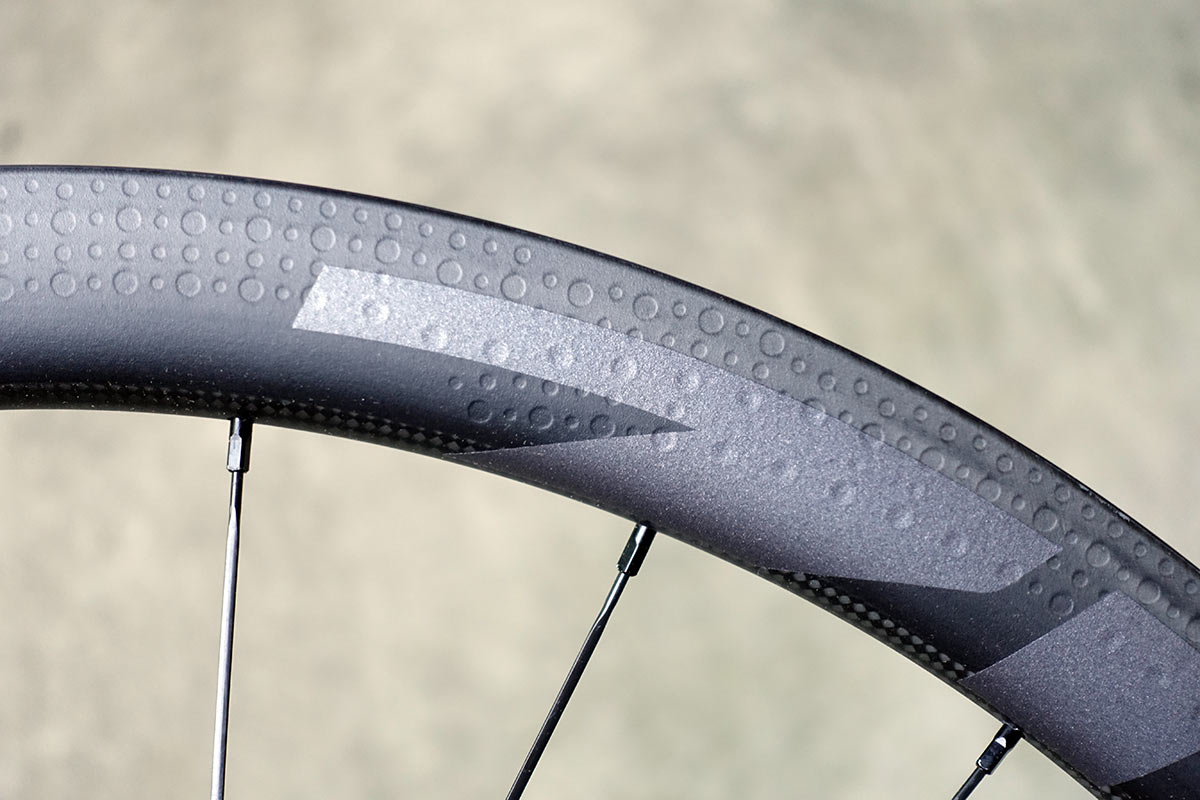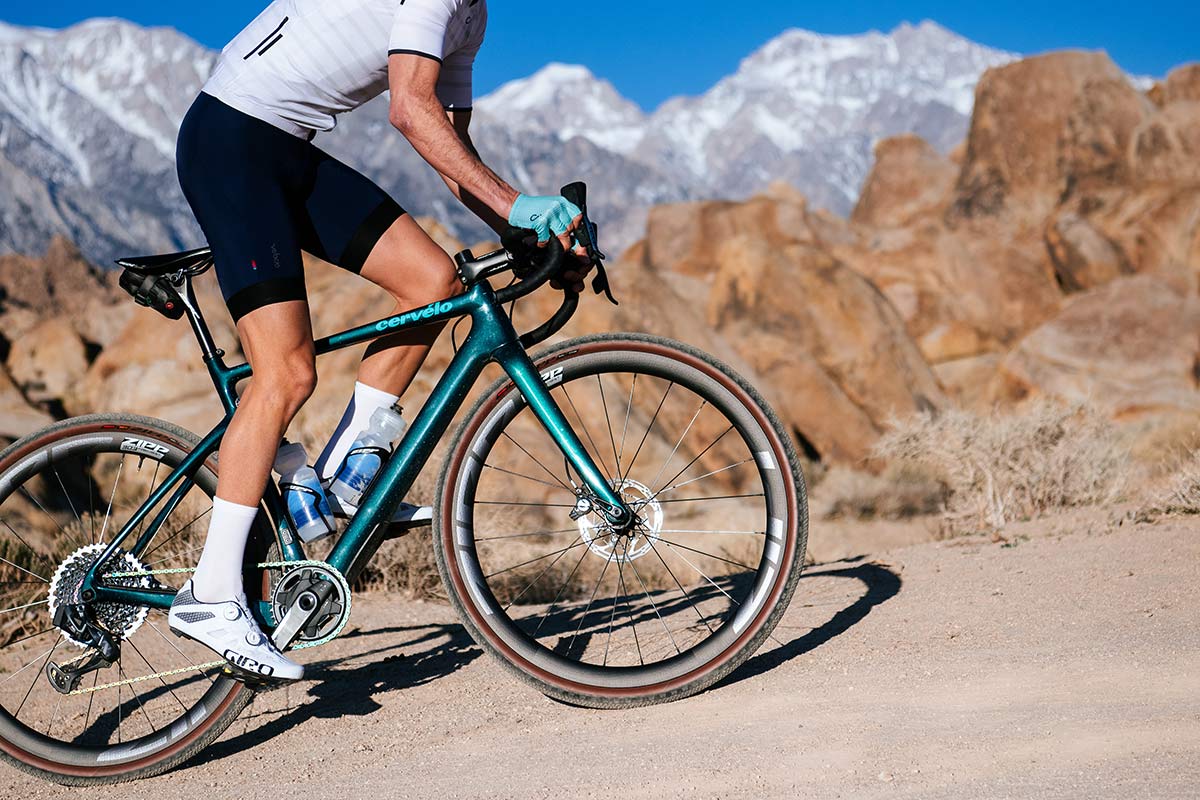If there’s such a thing as free speed, the all-new 2021 Zipp 303 Firecrest wheels seem hell bent on finding it. Borrowing their new wider, hookless concept from the recently introduced 303 S wheelset, the new Firecrest version goes even wider.
It makes a lot more changes, too, from a shallower rim depth to a much lighter carbon construction and all-new hubs. The result is an ultralight wheelset that gives up nothing, works on road and gravel, and still manages to drop its price…
What’s new about the 303 Firecrest wheels?
It’s really best to talk about the rims in comparison to the 303 S and prior models, so we did just that down below. But at the center of the new wheels are all-new ZR1 DB hubs.
The hubs are engineered in their German office to have a better, more precise seal design to improve durability. Inside are cartridge bearings with stainless steel balls. The biggest change is quicker engagement thanks to a new 6-pawl drive system. They’re offset to engage in sets of three into a 33-tooth ring, creating 66 effective points of engagement. That translates to a tight 5.5º rotation…good for tricky gravel climbs.
They’re Centerlock only and come ready 12mm thru axles. There’s a rim brake version as well, scroll to the bottom of this post for more on that.
How do 303 Firecrest and 303 S wheels compare?
Besides going wider and hookless, both are tubeless ready and require Tubeless or Tubeless-Ready tires. These tires have a stronger, stiffer bead that won’t stretch, and are required for these straight-side rim walls. You can run tubes in either, just not tube-type tires. Both are disc brake only, using the Centerlock rotor interface. Other than that, there’s not a lot shared by the two different versions of Zipp’s mid-depth all ’rounder.
The Firecrest rims are wider and shallower, and a lot lighter. They also get the dimples to improve aerodynamics, which is a more complicated molding process. The rim itself is a completely different shape, and it’s molded in their Indianapolis HQ/factory (versus SRAM’s Taiwan factory for the 303 S).
Key spec differences between the base level 303 S and this 303 Firecrest wheelset include:
| 303 S | 303 Firecrest | |
| Weight (F)* | 717g | 632g |
| Weight (R)* | 828g | 760g |
| Weight (Pair) | 1,540g (claimed) | 1,355g (claimed) |
| Rim Weight | 410g (claimed) | 355g (claimed) |
| Width (int) | 23mm | 25mm |
| Width (ext) | 27mm | xxxx |
| Depth | 45mm | 40mm |
| Price | $1,300 (€1,100/£985) | $1,900 (€1,800/£1,600) |
| Hubs | 76/176 | ZR1 DB |
| Spokes | 24 CX-Sprint | 24 CX-Sprint |
| Nipples | Brass | Alloy |
| Pawls / Teeth | 3 / 36 | 6 offset pairs / 33 |
| Engagement | 10º | 5.5º |
| Rider Weight | 250lb (115kg) | 250lb (115kg) |
*These are actual weights on our scale for individual wheel weights, and the 303 S were weighed without the valve stems installed, Firecrest with. Wheelset weights are Zipp’s claims. See below for more details on the weights.
2021 Zipp 303 Firecrest actual weights & widths
Our test set came pre-taped with valve stems installed. Ready to roll, with XDR freehub body, their actual weights are 632g (front) and 760g (rear), for a total of 1,392g. We’ll assume the tape and valve stems add the 37g over the 1,355g claimed weight.
The only other thing to add is the rotor lock ring, which comes included with the wheels. You can also get them with a standard HG-R 10/11 speed and Campagnolo freehub bodies.
Inside width measures 25mm with our calipers, a hair over 30mm externally, and depth is just over 40mm. Margin for error could simply be the angle at which we’re holding the caliper.
Like the 303 S, these are only available in 700c sizes. There are no 650B options.
Where do the weight savings come from?
Are you sure you’re ready for the answer?
From the hookless, straight side design. OK, so that’s not really all of it, but it’s a big part of it. Here’s why: To mold hooks into a rim’s interior sidewall, they have to use a silicone mold because it can “squish” such that they’re able to remove it after molding and curing.
With Hookless, they can use a hard mold, which means they have far more control over the molding process. There’s less variation in the outcome, they can use higher pressures, less resin and carbon material, and basically end up with a better product. For these, it allowed them to produce a lighter rim that’s just as durable as before.
It’s also less expensive to produce, and those savings are actually passed on to you, dear customer. These are ~$300 less per set than the prior 303 Firecrest wheels, yet they’re better and 300g lighter.
Are they faster? More aerodynamic? Where’s the data?
Yes, and once again, you can thank the hookless bead. This helps a Tubeless/Tubeless-Ready tire spread out and, as a system, create a more streamlined transition from rim to tire.
Rather than head to the wind tunnel, they took their aero “sticks” out to different roads to measure not just drag, but also efficiency from rolling resistance and vibration reduction. We told the story of how wider tires and tubeless made them faster with the launch of the 303 S, check out that post for the geeky details as they apply here, too.
Here’s the big takeaway: Whatever tire pressure you were running on the old 303 wheels with their 21mm internal width, drop it by at least 10psi to get all the benefits of these new, wider rims. Experiment downward from there. And that’s if you were running tubeless tires. If you’re switching from tubes to these wheels and going tubeless, drop it by 20psi. Max tire pressure for any size tire is 72.5psi (5bar)
Why no wind tunnel data? Because real world speed comes from many more factors than just wind and drag. And if we’re being honest, most modern wheels have pretty good aerodynamics and the differences are subtle at best (our words, not Zipp’s).
So, gains need to come elsewhere. The new 2021 Zipp 303 Firecrest proved 5 watts faster than the 303 S, and 15w faster than the prior 303 Firecrest.
The 303 has always been Zipp’s wheel for the cobbled classics. It’s a mix of shallow enough to be light and forgiving, but deep enough to provide tangible aero benefits. None of that has changed, and these are designed to fit anything from 28mm to 55mm wide tires.
Which means you can use them for road, cyclocross and gravel. The latter is how we’re testing them, stay tuned for a full review.
Yes, minimum recommended (read: safe) tire size is 700×28. And in case they (and we) haven’t made it clear, do not install regular tube-type tires on these rims. They are designed specifically and only for use with tires marked as Tubeless or Tubeless-Ready.
What about rim brake wheels?
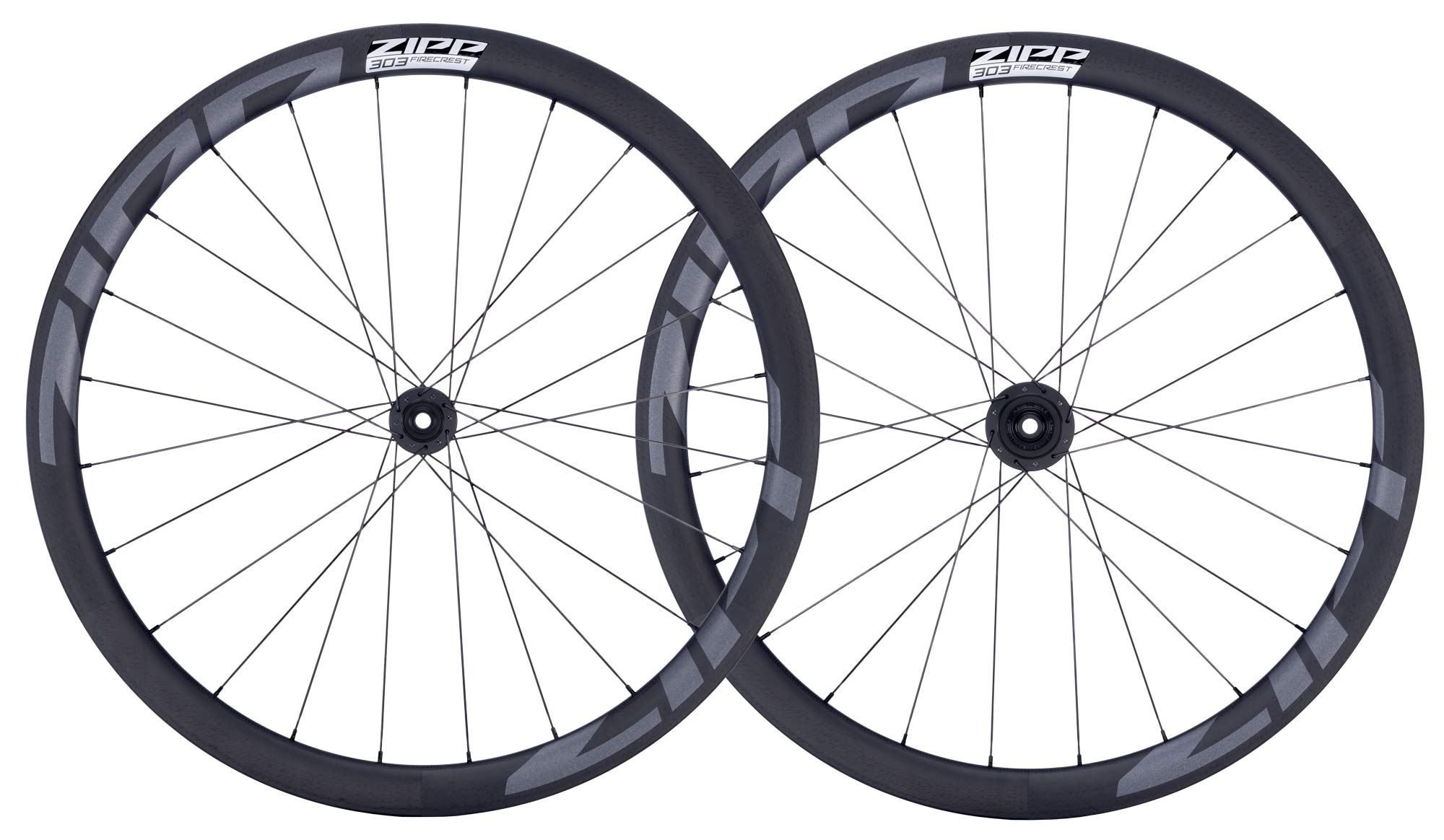
They’ll have an updated 303 Firecrest rim-brake wheelset, too. It has the same outside rim shape as before, but the inside of the rim has been updated to be fully tubeless ready. And it gets the new hubs, just in rim brake versions with QR end caps. They’re about $2,200 USD, the same price as before, which is actually more expensive than the new disc brake versions shown above (thanks, hookless!). They’ll be available in tubular options, too.
In fact, all of Zipp’s wheels are now tubeless ready (albeit with a more standard hooked interface and narrower profiles on the others…ranging from 18-21mm internal widths, limited by what will fit inside rim brakes) and get these new graphics. But we see where this is headed…

